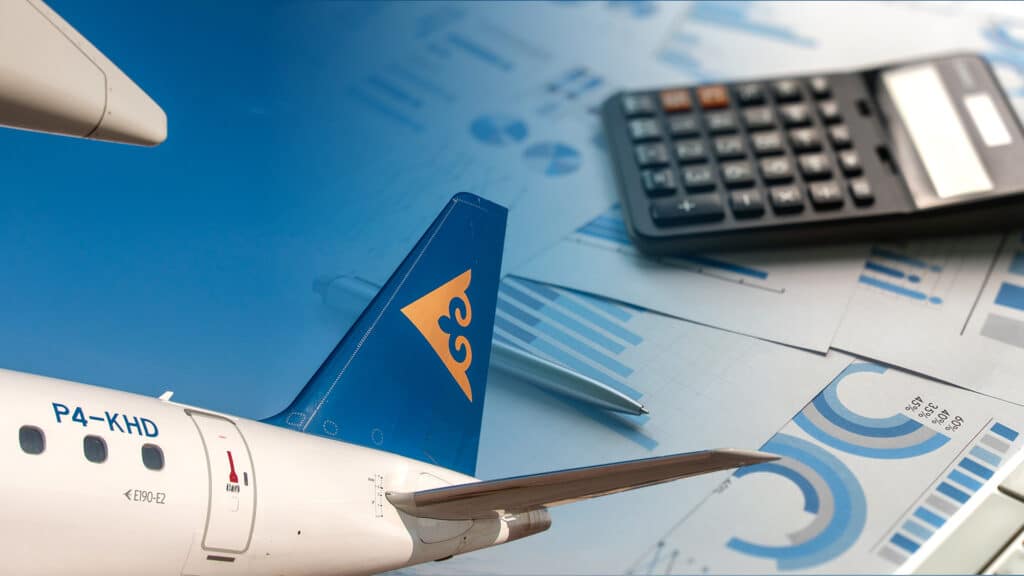Air Astana reports a 13% increase in revenue even though its profits plunged five times

Air Astana increased consolidated profit for the first half of 2024 by 12.9%, according to a release on the company’s website. However, the airline’s profit has plunged by 80%.
In the first six months of the year, Air Astana reported $586.2 million in revenue compared to $519.1 million earned the year prior and $4.6 million of net income compared to $23.5 million in the first half-year of 2023. The results include data for both Air Astana and FlyArystan, its low-cost subsidiary that became an independent entity earlier this year.
At the same time, the company outlines that the indicator does not take non-recurring items into account. These include net costs related to the February IPO ($9.4 million) and expenses on charity connected to the spring floods ($2.7 million). Non-recurring items for the second quarter include IPO expenses of $3.1 million, and $2.7 million for charity. The non-recurring items were considered $0.4 million spent on IPO and $8.9 million profit drawn from mobilization in Russia. The company sees the latter as an extraordinary market event.
Air Astana emphasizes that an adjusted EBITDAR (Earnings Before Income Tax, Depreciation, Amortization and Rent), excluding non-recurring items, also surged by 9.8%, up to $138.7 million, compared to the first half-year of 2023. EBITDAR margins (profit to EBITDAR ratio) in January-June were 23.7%, compared to 24.3% a year prior.
The number of passenger-kilometers (pkm) increased by 11.8%, making up to $8.7 billion in the first half-year. Pkm profit rose by 1%, making up to 6.73 cents. Air Astana also emphasizes that over the first six months, both airline companies carried a record-breaking number of passengers – 4 million people (14.6% increase) with 82% constant average load index (opposed to 82.7% last year).
Air Astana has also equipped the fleet with six new aircraft. These planes are planned to be utilized or focusing on the narrow-body aircraft fleet. Today there are 54 aircraft available for use by the group. At the end of June, seven more Airbus A321LR aircrafts were announced to be received by the carrier. By the end of the year, the number of available aircraft shall reach 59 units, which is triple the amount planned.
Since mid-February, Air Astana stocks have been traded on KASE and AIX, while depositary receipts are on AIX and the London Stock Exchange. The IPO resulted in a Samruk-Kazyna fund share decrease from 51% to 41%. British BAE systems, which used to be the second largest shareholder at 49%, now has 15.3% of shares in its possession. American Citibank, acting as a nominee shareholder for issuing receipts, holds 26.76% of shares, and the Unified Accumulative Pension Fund holds 6.5%.
Within the IPO, investors were offered both stocks held by existing stockholders and newly issued ones. Shares and receipts were sold for $370 million in total, at fulfillment of options for the follow-on offering. The terminal price of the offer was set at 1,073.83 tenge per share.
After the IPO, Air Astana’s stock plunged from 1,110 tenge to 834 at the time of publication. The drawdown happened due to buybacks for the employee motivation program. Buybacks usually stimulate demand for the shares, causing their value to increase.

